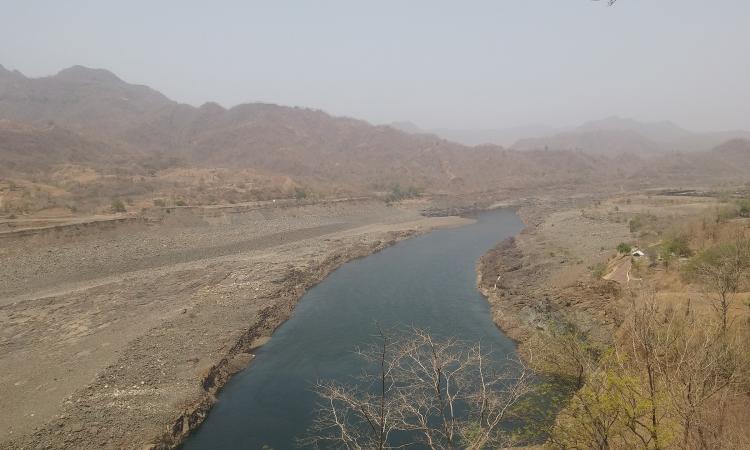
While dams are said to play a crucial role in meeting growing water demands, generating energy, and protecting from floods, controlled water release from dams can significantly impact the ecosystem of estuaries and the fish living in its waters.
What are estuaries
Estuaries are transitional zones between saline and freshwater environments, and serve as a feeding and nursery or breeding ground for numerous marine organisms, particularly anadromous fish species i.e. fish which migrate to freshwater via estuaries for spawning and then return to estuaries to mature. In estuaries, water is brackish due to the mixing of freshwater from rivers and saltwater from the sea or oceans.
Estuaries require a sufficient quantity and quality of freshwater to function properly. However, inland water development activities on rivers alter freshwater inflow and negatively affect estuary ecosystems. For example, evidence shows that dams affect river systems negatively by interrupting their flows. This reduction in downstream flow from dams can negatively affect water quality, silt load, temperature, and biodiversity in estuaries.
The paper titled 'Assessment of optimal dam release for anadromous fish migration in estuary' published in Ecological Indicators discusses the findings of a study that investigates the effects of Sardar Sarovar Dam (SSD) on downstream flow, and estimates the flow requirements necessary to support anadromous fish migration namely that of the hilsa fish in the Narmada River estuary.
Importance of freshwater flows for fish
Compared to catadromous fish (fish that migrate from freshwater to saline water) and potamodromous fish (fish that migrate inside freshwater), anadromous fish (fish that migrate from saline water to freshwater) are more sensitive to changes in flow regimes. Variations in flows can greatly impact fish catch and the livelihoods of local fishing communities. It is thus important to determine the appropriate freshwater release from dams to maintain the viability of the downstream ecology.
River Narmada is the longest west-flowing river in India and it meets the Arabian sea at the Gulf of Khambhat (GoK) after flowing through Madhya Pradesh, Maharashtra and Gujarat. As part of the Narmada Valley Project (NVP), the Narmada Valley Development Authority (NVDA) started the construction of the Sardar Sarovar Dam (SSD) in 1987 on the Narmada River, which ranks second among concrete gravity dams in the world. The SSD was constructed to supply water for domestic consumption, agriculture, power generation, and flood prevention.
The Narmada River estuary is located downstream of the SSD and harbours rich biodiversity which is a source of revenue for the local fishing communities. The SSD construction has reduced the volume of water and silt flowing downstream substantially.
The hilsa was the dominant fish catch (40 to 45 percent) inside the estuary during the pre-dam period and the bulk catch of hilsa was mainly obtained during the monsoonal period especially from July to September with the flooding in the Narmada River. Damming has led to reduction in the monsoonal flow of the river affecting the freshwater flow inside the estuary, increased the dominance of tidal activity, and led to increase in salinity inside the estuarine area.
This has severely affected the fish migration from the sea to the freshwater areas for breeding and spawning in terms of restriction on migration distance and reduction of time available for migration. The hilsa fish migrate to freshwater to reproduce, and the juvenile fish migrate to estuaries to mature before migrating to the sea.
There are different migration distances for hilsa fish at different locations in the Narmada River. The construction and the hydrological changes caused by the SSD have resulted in a restricted migration distance for the hilsa. This restriction is particularly concerning for adult hilsa as they require a saline environment. Due to the limited tidal fluctuation between 60 kms and 70 kms due to reduction in freshwater flows, the migration of adult hilsa has also restricted between these points at around 65 km. On the other hand, juvenile and livebearers require a freshwater environment, and therefore, they can be found beyond the 70 km point. A higher catch of hilsa beyond the 70 km could result in the exploitation of juveniles and livebearers, and have negative impact on the population dynamics of hilsa in the region.
The study finds that:
- The construction of the SSD has significantly altered the downstream flow patterns, particularly during the monsoon season. A reduced freshwater flow has resulted in increased tidal influence.
- The optimal discharge rates for fish migration range from 1500 to 2250 m3 /s, and the minimum flow required to prevent tidal dominance in the estuary is 500 m3 /s.
The study emphasises the importance of appropriate freshwater release from dams to preserve downstream ecology, support fish migration, and avoid adverse effects on fishing communities.
This is an open access paper under the creative commons license
/articles/saving-hilsa-letting-narmada-flow